The Silent Whispers of Horses: Understanding Equine Body Language
One of my favorite times with my horses is when I sit in their stable listening to the gentle munching of hay, their eyes soft, ears relaxed, a gentle swishing of their tail and one hind leg resting – all is well with the world. Understanding horses’ body language enables people who work with horses to know instantly how they are. Horses speak volumes without uttering a single word. Their communication is a subtle dance of flickering ears, shifting weight, and fleeting expressions—each movement a clue to their thoughts and emotions. For those who know how to listen, a horse’s body language reveals fear, curiosity, irritation, or contentment in an instant.
Understanding these hidden signals isn’t just fascinating—it’s essential. Misreading their cues can lead to frustration or even danger, whether you’re training, riding, or simply spending time with your horse. But when you learn to interpret their silent language, you unlock a deeper bond, safer interactions, and a more harmonious partnership.
What is your horse trying to tell you? Every gesture holds meaning from the twitch of a tail to the tension in their jaw. Let’s decode the secrets of equine body language together.
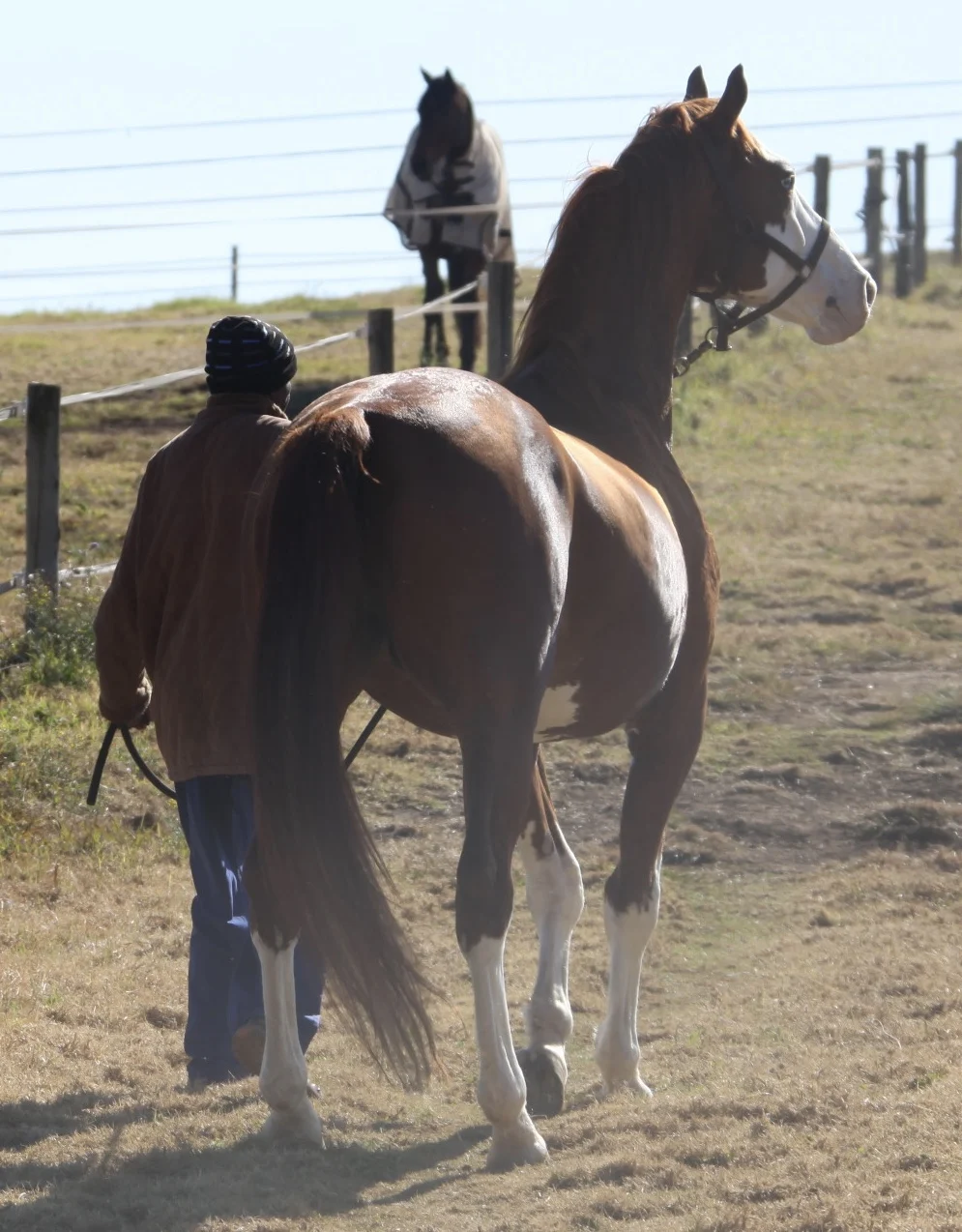
The Basics of Equine Communication
Horses are masters of nonverbal communication. As prey animals, their survival depends on the ability to convey messages quickly and clearly—without a sound. While humans rely heavily on verbal language, horses express their emotions, intentions, and reactions through subtle (and sometimes not-so-subtle) physical signals.
Why Body Language Matters
- Safety: Recognizing early signs of stress or aggression can prevent accidents.
- Trust: Responding appropriately to your horse’s cues builds mutual understanding.
- Training: A horse that feels “heard” is more willing to learn and cooperate.
Key Areas to Observe
Horses communicate through their entire body, but these are the most telling areas:
- Ears: The direction and movement indicate focus, mood, and alertness.
- Eyes & Forehead: Reveal fear, relaxation, or tension.
- Mouth & Nostrils: Show stress, curiosity, or contentment.
- Tail: Signals irritation, excitement, or submission.
- Posture & Movement: Shifting weight, pawing, or freezing can indicate discomfort or readiness to react.
Interpreting the Spectrum of Signals
A horse’s body language exists on a spectrum:
- Relaxed: Soft eyes, lowered head, loose lips, resting a hind leg.
- Alert: Ears forward, head raised, tense muscles—focused but not necessarily fearful.
- Stressed/Afraid: Wide eyes, flared nostrils, high head, tense body, swishing tail.
- Aggressive/Defensive: Ears pinned back, bared teeth, raised tail, charging posture.
By learning these fundamentals, you’ll start to see the hidden conversations your horse has every day—and respond in a way that strengthens your connection.

Reading the Ears: The Direction of Attention
A horse’s ears are like finely tuned radar dishes—constantly swiveling, twitching, and positioning to convey their thoughts and emotions. Unlike humans, who rely heavily on facial expressions, horses broadcast their mental state primarily through ear movement. Learning to “read” their ears gives you instant insight into where their attention is focused and how they’re feeling.
The Language of Ear Positions
1. Forward-Pointed Ears
- Meaning: Interest, curiosity, or focused attention.
- Context: Your horse hears something intriguing in front of them—perhaps another horse, a new object, or your training cues.
- What to Do: Reward their engagement. If they’re locked onto something potentially spooky, help them relax by redirecting their focus.
2. Pinned Back Ears (Flat Against the Head)
- Meaning: Anger, irritation, pain, or aggression.
- Context: Often seen when a horse feels threatened, is in discomfort (e.g., ill-fitting tack), or is asserting dominance over another horse.
- What to Do: Proceed with caution. Check for physical discomfort first (e.g., sore back, dental issues). If it’s behavioral, avoid escalating tension—stay calm and firm.
3. Slightly Back or “Airplane” Ears (Not Fully Pinned)
- Meaning: Mild annoyance, uncertainty, or divided attention.
- Context: Common during training when a horse is conflicted (e.g., listening to the rider but also distracted).
- What to Do: Reassure them with clear, consistent cues to regain their focus.
4. Swiveling or Independent Ears
- Meaning: Scanning the environment, mild concern, or curiosity.
- Context: Horses often do this in new settings or when hearing unfamiliar sounds.
- What to Do: Let them process their surroundings, but watch for escalating anxiety. A relaxed swivel is normal; rapid flicking may signal stress.
5. Droopy or Relaxed Ears
- Meaning: Contentment, drowsiness, or submission.
- Context: Often seen during grooming, resting, or when bonding with a trusted human.
- What to Do: Enjoy the moment! This is a sign your horse feels safe and comfortable.
Ears in Combination with Other Signals
- Ears back + tense body: Likely aggression or pain.
- Ears forward + snorting: Excited or alarmed by something.
- Ears flicking rapidly + tail swishing: Irritation or impatience (e.g., flies or inconsistent riding aids).
Practical Tip: Spend time watching your horse’s ears in different situations—while eating, being ridden, or turned out with others. You’ll start to notice patterns that reveal their personality and preferences.

Eyes and Forehead: Windows to Emotion
A horse’s eyes and forehead reveal an entire spectrum of emotions—from curiosity to fear, annoyance to deep relaxation. While their ears indicate where their attention is focused, their eyes tell you how they feel about it. Learning to interpret these subtle cues will help you respond with greater empathy and precision.
The Eyes: More Than Just a Gaze
1. Soft, Half-Closed Eyes
- Meaning: Contentment, relaxation, or even drowsiness.
- Context: Often seen during grooming, massage, or when standing quietly in the sun.
- What to Do: This is a sign your horse feels safe. Avoid sudden movements that might startle them out of this peaceful state.
2. Wide-Open Eyes with Visible Whites (“Whale Eye”)
- Meaning: Fear, alarm, or high stress.
- Context: Common when spooking, feeling trapped, or encountering something terrifying (e.g., a flapping tarp).
- What to Do: Stay calm, give them space, and remove the stressor if possible. Forcing them to “face their fear” in this state can backfire.
3. Hard, Narrowed Eyes
- Meaning: Irritation, discomfort, or aggression.
- Context: May appear when a horse is in pain (e.g., ill-fitting tack) or annoyed (e.g., pestered by flies or another horse).
- What to Do: Check for physical discomfort first. If it’s behavioral, reassess your approach—are you pushing too hard in training?
4. Rapid Eye Movements (Darting Glances)
- Meaning: Anxiety, overwhelm, or hypervigilance.
- Context: Often seen in new environments or when a horse feels uncertain.
- What to Do: Slow down. Offer reassurance through your voice and body language (e.g., deep breaths, relaxed posture).
The Forehead: Tension vs. Relaxation
- Smooth Forehead: A calm, happy horse.
- Wrinkled or Tight Forehead: Stress, pain, or concentration (e.g., during difficult training).
- Furrowed Brow with Flared Nostrils: Extreme fear or agitation—proceed with caution.
The “Blink Rate” Secret
- Slow Blinks: A relaxed, trusting horse.
- Fast or Staring Blinks: Nervousness or discomfort.
- No Blinking (Fixed Gaze): A sign of freezing—often precedes bolting or rearing.
Practical Tip: Watch how your horse’s eyes change during different activities. For example, compare their expression during a relaxing trail ride versus a stressful vet visit. Over time, you’ll learn their unique “baseline” and spot shifts in emotion faster.

The Mouth and Muzzle: Subtle Tension and Relaxation
While often overlooked, a horse’s mouth and muzzle provide some of the most honest signals about their emotional state. From the slightest lip twitch to dramatic teeth-baring, these delicate movements form an essential part of equine communication. Let’s decode what your horse is “saying” through their mouth.
Interpreting Mouth and Muzzle Signals
1. Tight, Clenched Jaw
- Meaning: Stress, resistance, or discomfort
- Context: Common during:
- Uncomfortable tack (ill-fitting bit/noseband)
- Confusing training situations
- Dental issues or mouth pain
- Action:
- Check equipment fit immediately
- Rule out dental problems
- Simplify training requests
2. Licking and Chewing
- Meaning: Processing information, submission, or relaxation
- Context: Appears when:
- Releasing tension after stress
- Accepting a rider’s request
- Feeling content after eating
- Action:
- Reward this positive signal
- Recognize it as a “lightbulb moment” in training
3. Flared Nostrils
- Meaning: Heightened emotional state
- Variations:
- Slightly flared: Mild excitement/interest
- Wide flared: Extreme fear or exertion
- One-sided flare: Investigating a scent
- Action:
- Match response to degree of flare
- Calm exaggerated responses with steady breathing
4. Lip Curling (Flehmen Response)
- Meaning: Investigating scents
- Context: Triggered by:
- New smells in environment
- Mare’s urine (in stallions)
- Certain pheromones
- Action:
- Allow this natural behavior
- Recognize it’s not aggression
5. Mouth Opening Without Biting
- Meaning: Anxiety or confusion
- Context: Occurs when:
- Facing conflicting pressures
- Anticipating discomfort
- Feeling claustrophobic
- Action:
- Release pressure immediately
- Re-establish clear communication
6. Bared Teeth
- Meaning: Clear warning signal
- Variations:
- Slight show: Mild irritation
- Full display: Aggressive threat
- Action:
- Heed this serious warning
- Identify and remove provocation
Practical Applications
- Bit Check: Regularly examine your horse’s mouth corners for calluses or cuts that indicate bit problems.
- Stress Barometer: The muzzle is often the first place tension appears – monitor it during training sessions.
- Reward Signal: Many horses lick lips when pleased – use this as positive feedback in training.
Pro Tip: Combine mouth observations with other signals. For example:
- Flared nostrils + wide eyes = Fear
- Licking + relaxed ears = Contentment
- Clenched jaw + pinned ears = Ange

Tail Talk: More Than Just Swishing Flies
Your horse’s tail is a dynamic communication tool that reveals a wealth of information about their emotional state. Far beyond just flicking away insects, tail movements form an intricate language that ranges from subtle mood indicators to urgent warnings. Let’s explore what every swish, clamp, and elevation really means.
The Tail Position Spectrum
1. High and Flagging (Carried Above Natural Position)
- Meaning: Heightened excitement or alarm
- Contexts:
- Stallions showing off
- Herd leaders asserting dominance
- Horses startled by something
- Action:
- Assess environment for triggers
- Help horse refocus if overly stimulated
2. Neutral Relaxed Position
- Meaning: Contentment and ease
- Contexts:
- Grazing peacefully
- Standing relaxed in familiar space
- Action:
- Maintain calm environment
- Appreciate this ideal state
3. Clamped Tight Against Hindquarters
- Meaning: Fear, submission, or discomfort
- Contexts:
- New or scary situations
- Submission to dominant horse
- Cold weather or muscle tension
- Action:
- Identify and remove stressors
- Check for physical discomfort
Interpreting Tail Movements
1. Slow, Rhythmic Swishing
- Meaning: Mild irritation or fly defense
- Action:
- Check for insects
- Consider seasonal fly protection
2. Forceful, Side-to-Side Lashing
- Meaning: Significant irritation or anger
- Action:
- Evaluate for:
- Ill-fitting tack
- Training frustration
- Aggressive herd dynamics
- Evaluate for:
3. Stiff, Vibrating Tail
- Meaning: Extreme tension or impending explosion
- Action:
- Proceed with caution
- Create space for safety
4. Tail Wringing (Circular Motions)
- Meaning: Often indicates back pain
- Action:
- Schedule veterinary check
- Assess saddle fit
Special Tail Signals
1. “Pooping” Tail (Lifting Without Defecating)
- Meaning: Anticipation or stress
- Contexts:
- Before challenging jumps
- During vet/farrier visits
- Action:
- Recognize as stress signal
- Implement calming techniques
2. Asymmetrical Carriage
- Meaning: Possible neurological issue
- Action:
- Consult vet if persistent
- Monitor for other symptoms
Practical Tail Observation Tips
- Establish Baselines: Learn your horse’s normal tail carriage at rest
- Movement Analysis: Observe how tail moves during:
- Different gaits
- Training exercises
- Social interactions
- Combination Cues: Always read tail signals with other body language:
- High tail + pricked ears = Alertness
- Clamped tail + tense muscles = Fear
Pro Insight: Arabian horses naturally carry tails higher than many breeds – know your horse’s breed-specific norms.

Posture and Movement: The Bigger Picture
While individual body parts tell important stories, your horse’s overall posture and movement patterns reveal the complete narrative of their emotional and physical state. This holistic view helps you distinguish between temporary reactions and deeper issues, giving you the most accurate read of your horse’s condition.
Weight Distribution and Stance
1. Square, Balanced Stance
- Meaning: Content and relaxed
- Characteristics:
- Weight evenly distributed
- One hind leg slightly cocked
- Head at natural height
- Action: Ideal state – maintain this comfort
2. Weight Shifted Back (Haunches Engaged)
- Meaning: Alert or preparing to react
- Variations:
- Slight shift: Mild concern
- Extreme shift: Ready to flee
- Action:
- Identify potential triggers
- Allow processing time if needed
3. Leaning Forward
- Meaning: Eagerness or impatience
- Contexts:
- Anticipating feeding time
- Excited about work
- Action:
- Channel energy positively
- Reinforce patience training
Movement Patterns and Their Meanings
1. Freezing (Sudden Stillness)
- Meaning: High alert or fear processing
- Danger Signs:
- Tense muscles
- Fixed gaze
- Held breath
- Action:
- Stay calm and wait
- Prepare for potential spook
2. Pacing or Circling
- Meaning: Anxiety or discomfort
- Common Causes:
- Stall confinement
- Separation stress
- Physical pain
- Action:
- Investigate underlying cause
- Consider environmental changes
3. Pawing or Striking
- Meaning: Frustration or impatience
- Differentiation:
- Gentle pawing: Mild irritation
- Forceful striking: Strong protest
- Action:
- Address root cause
- Redirect energy appropriately
Special Postural Indicators
1. “Camped Out” Stance (Legs Forward)
- Meaning: Often indicates laminitis
- Action:
- Emergency vet call
- Provide soft standing surface
2. Repeated Weight Shifting
- Meaning: Discomfort or pain
- Action:
- Check hooves and legs
- Assess for colic symptoms
3. Swaying or Listless Standing
- Meaning: Possible exhaustion or illness
- Action:
- Monitor vital signs
- Consult veterinarian
Practical Movement Analysis Tips
- Observe at Different Times:
- Resting in stall/paddock
- During handling
- Under saddle work
- Note Asymmetries:
- Consistent favoring of one side
- Uneven muscle development
- Gait irregularities
- Track Changes Over Time:
- Document subtle shifts
- Note seasonal variations
- Compare age-related changes
Pro Insight: A horse’s posture during urination/defecation can indicate comfort levels – straining or unusual positions may signal health issues.


Recognizing Stress vs. Relaxation: The Full Spectrum
Understanding whether your horse is stressed or relaxed isn’t always black and white – it’s about reading the complete constellation of signals. This section will help you distinguish between temporary reactions and chronic stress, while recognizing true contentment in your equine partner.
The Stress Scale: From Mild Concern to Panic
1. Early Warning Signs (Mild Stress)
- Physical Indicators:
- Slight head elevation
- Intermittent ear flicking
- Occasional tail swish
- Behavioral Clues:
- Increased vigilance
- Shortened attention span
- Action Plan:
- Remove or reduce stressors
- Provide reassurance
- Allow processing time
2. Moderate Stress Signals
- Physical Indicators:
- Consistent muscle tension
- White-rimmed eyes
- Excessive sweating (without exertion)
- Behavioral Clues:
- Resistance to aids
- Repetitive movements (weaving, stall-walking)
- Action Plan:
- Evaluate environment
- Consider health check
- Adjust training approach
3. Extreme Stress Reactions
- Physical Indicators:
- Violent trembling
- Labored breathing
- Uncontrolled defecation
- Behavioral Clues:
- Complete refusal to move
- Bolting/rearing
- Action Plan:
- Ensure immediate safety
- Remove from situation
- Professional consultation
The Relaxation Indicators
1. Mild Contentment
- Physical Signs:
- Soft eye expression
- Lowered head position
- Relaxed muzzle
- Behavioral Signs:
- Willing engagement
- Smooth transitions
2. Deep Relaxation
- Physical Signs:
- Drooping lower lip
- Heavy-lidded eyes
- Deep, rhythmic breathing
- Behavioral Signs:
- Standing with cocked hind leg
- Mutual grooming (with other horses)
Stress vs. Pain: Key Differences
Stress Indicators:
- Generally improve when stressor removed
- Whole-body reactions
- Often accompanied by environmental awareness
Pain Indicators:
- Consistent regardless of environment
- Localized tension or guarding
- May worsen with specific movements
Practical Stress-Reduction Techniques
- Environmental Modifications:
- Increase turnout time
- Provide visual barriers
- Ensure herd compatibility
- Handling Adjustments:
- Slow, predictable movements
- Clear communication
- Frequent breaks
- Positive Reinforcement:
- Reward calm behavior
- Build confidence gradually
- Create predictable routines
Pro Tip: Keep a “stress journal” to track triggers and responses – patterns often emerge over time that can guide management decisions.

How to Respond to Your Horse’s Signals: Building Trust Through Understanding
Now that you can interpret your horse’s body language, let’s explore how to respond in ways that strengthen your bond and encourage positive communication. The key lies in becoming a perceptive partner who respects what the horse is telling you.
Matching Your Response to the Message
1. When Your Horse Shows Fear/Anxiety
- Do:
- Stay calm and breathe deeply (horses mirror your energy)
- Remove or distance from the stressor if possible
- Offer a familiar comfort (your voice, gentle scratching)
- Allow time to process at their pace
- Don’t:
- Flood them with the scary object
- Punish fearful reactions
- Rush the desensitization process
2. When Your Horse Shows Irritation/Resistance
- Do:
- Check for physical discomfort first (tack, pain, health)
- Break requests into smaller steps
- Reward small attempts
- Reassess your training approach
- Don’t:
- Escalate pressure
- Ignore the warning signs
- Attribute it to “stubbornness”
3. When Your Horse Shows Relaxation/Contentment
- Do:
- Mirror their calm energy
- Reward with scratches or rest
- Savor these connection moments
- Don’t:
- Suddenly change the mood
- Overload with new requests
- Take this state for granted
The Art of Appropriate Timing
- Immediate Responses:
- React within 3 seconds for clear cause-effect understanding
- Example: Release pressure the instant they try what you asked
- Long-Term Adjustments:
- Modify training plans based on cumulative observations
- Example: Noticing daily stress at feeding time = change schedule
Building a “Feedback Loop” of Trust
- Consistency Matters:
- Always acknowledge their communication
- Follow through predictably
- Progressive Desensitization:
- Introduce new things at the edge of their comfort zone
- Advance only when they show relaxation
- Positive Reinforcement:
- Mark and reward desired responses
- Helps them offer more relaxed behavior
Advanced Technique: Learn to “shape” behavior by reinforcing small steps toward your goal, which keeps stress low and confidence high.
When to Seek Professional Help
Consult an equine behaviorist if you notice:
- Sudden unexplained changes in body language
- Persistent stress signals even in familiar environments
- Aggression that doesn’t respond to management changes
Pro Tip: Video your interactions periodically – you’ll spot subtle patterns in your responses and your horse’s reactions that aren’t obvious in the moment.
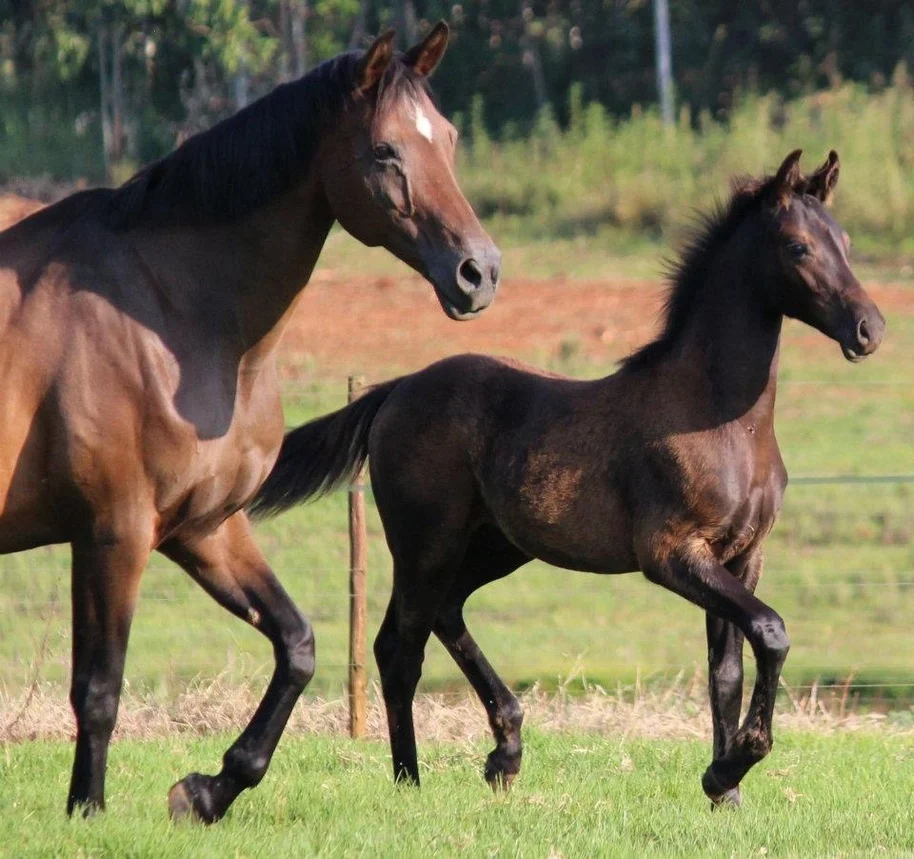
Case Studies
In this section, we explore real-life examples that highlight the importance of understanding equine body language. These case studies are drawn from personal experiences, illustrating how this knowledge can be applied in various situations.
Case Study 1: Overcoming Trailer Loading Anxiety
- Situation: A gelding named Shadow had a severe aversion to trailer loading, exhibiting signs of stress like sweating, pacing, and refusing to approach the trailer.
- Observations: Shadow’s body language – ears pinned back, wide eyes, and a tense body – indicated fear and mistrust.
- Approach: By recognizing these signs, I took a slow and patient approach. I spent time desensitizing Shadow to the trailer, using positive reinforcement and allowing him to explore at his own pace.
- Outcome: Gradually, Shadow’s body language shifted to curiosity (ears forward, relaxed posture). Eventually, he loaded into the trailer with less anxiety.
- Insight: Understanding and respecting Shadow’s fear through his body language was key to successfully overcoming his trailer-loading anxiety.
Case Study 2: Identifying Subtle Signs of Discomfort
- Situation: A mare, Bella, began to show reluctance in her work, not performing as usual.
- Observations: Subtle cues in her body language, like a slight stiffness in her gait and a lowered head, were initially overlooked.
- Approach: Upon closer observation, these signs pointed to physical discomfort. A veterinary check revealed a mild lameness.
- Outcome: After appropriate treatment and rest, Bella returned to her normal, enthusiastic self.
- Insight: This case emphasized the importance of recognizing even the slightest changes in body language as potential indicators of health issues.
Case Study 3: Building Trust with a Rescue Horse
- Situation: A rescue horse, Jasper, was initially very distrusting and fearful of human interaction.
- Observations: Jasper’s body language – avoiding eye contact, turning his body away, and tensing up when approached – spoke volumes about his lack of trust.
- Approach: I respected his space, offering him time to observe me from a distance, and gradually worked on building trust through calm and gentle interaction.
- Outcome: Over time, Jasper began to show signs of trust, like approaching willingly and showing relaxed body posture.
- Insight: Patience and understanding of Jasper’s body language were crucial in developing a bond based on trust and respect.
These case studies demonstrate the profound impact of understanding and responding to equine body language. Whether addressing behavioral issues, health concerns, or building trust, the ability to ‘listen’ to what horses are communicating through their body can lead to more effective, compassionate, and fulfilling interactions with these magnificent animals.
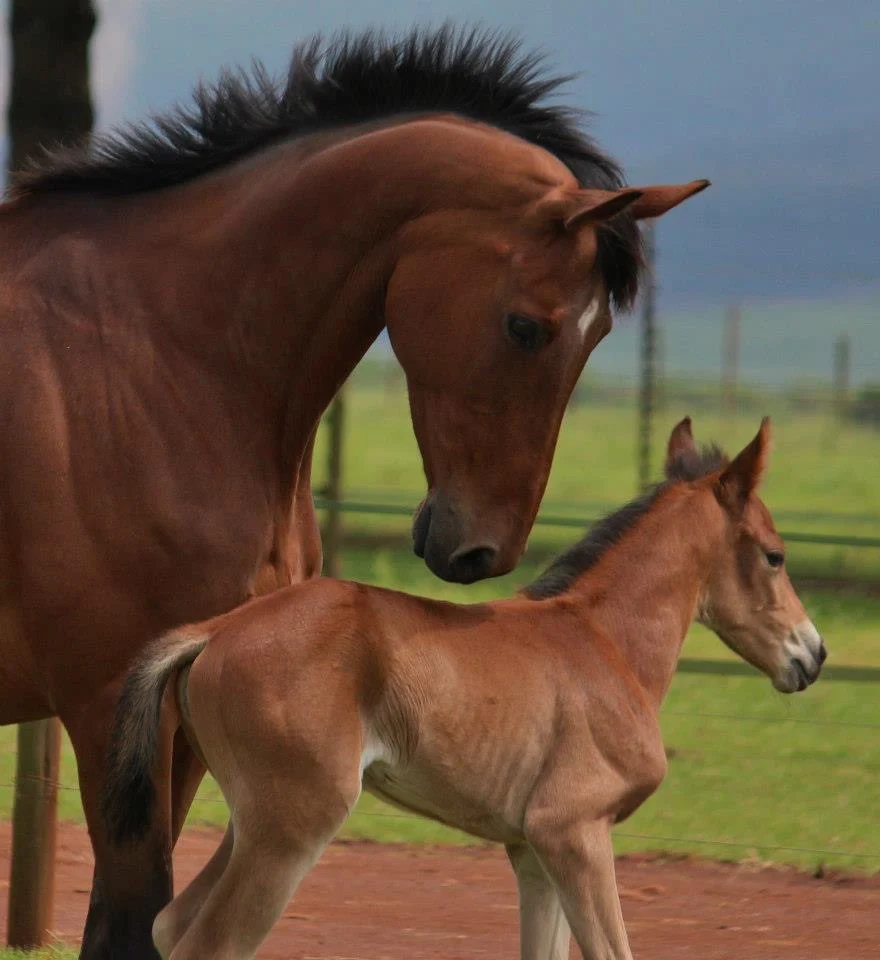
Conclusion
As we reach the end of our journey through “The Silent Whispers of Horses: Understanding Equine Body Language,” we’ve uncovered the layers of communication that exist beyond words. From the subtle flick of an ear to the gentle swaying of a tail, every gesture and posture holds a meaning in the equine world. We’ve explored the nuances of facial expressions, the significance of ear and eye movements, the story told by posture and movement, and the profound insights gained from real-life case studies.
The key takeaway is the immense value in developing the skill of observing and interpreting these silent messages. It’s a practice that requires patience, empathy, and a deep respect for these noble creatures. By honing this skill, we not only enhance our understanding of horses but also deepen the bond we share with them.
I encourage each of you to spend time with your horses, observing and learning from them. Remember, every horse is an individual with their own way of expressing themselves. The more you listen with your eyes, the more fluent you become in their silent language.
In closing, the journey of understanding equine body language is more than just a pathway to better care and training; it’s a doorway to a profound connection. It’s about building a relationship based on mutual respect, trust, and understanding. This silent conversation is a beautiful dance of give and take, a testament to the deep bond and extraordinary communication possible between horses and humans. As you continue to interact with these magnificent animals, cherish each gesture and expression, for they are the words of a beautiful, unspoken language.
If you enjoyed this article, have a look at The Art of Equine Enrichment: Nurturing Mind and Body for a Thriving Horse

Additional Resources
To further your journey in understanding and communicating with horses, I recommend a variety of resources that offer deeper insights and practical guidance. These books, courses, and videos are invaluable for anyone looking to expand their knowledge and deepen their connection with these majestic creatures.
Suggested Readings
- “The Horse Behavior Problem Solver” by Jessica Jahiel
- “Equine Behaviour: Principles and Practice” by Daniel Mills and Kathryn Nankervis
- “Understanding Horse Behavior” by Lesley Skipper
- “Horse Speak: An Equine-Human Translation Guide” by Sharon Wilsie and Gretchen Vogel
Online Courses
- “Equine Behavior and Safety” offered by the University of Guelph on Coursera
- “Understanding Equine Body Language” offered by E-Training for Horses
- “Horse Behavior and Welfare” by the University of Edinburgh on Coursera
Videos and Documentaries
- “The Path of the Horse” – Documentary exploring horse-human relationships
- “Understanding Horse Behavior” – YouTube series by EquitopiaCenter
- “Horse Psychology 101” – Educational series available on Horse & Country TV
Websites and Online Forums
- The Horse Forum – www.horseforum.com – A community of horse enthusiasts where you can discuss equine behavior and care.
- EquiSearch – www.equisearch.com – Offers articles and advice on horse behavior and training.
- The Equine Behaviour Forum – www.equinebehaviourforum.org – A platform for sharing knowledge and research on equine behavior.
These resources provide a wealth of information for both novice and experienced horse enthusiasts. By engaging with these materials, you can gain a deeper understanding of the complexities of equine behavior and further develop your skills in interpreting and responding to the silent whispers of horses.
Please leave a comment of your experience with learning how to understand your horses body language….
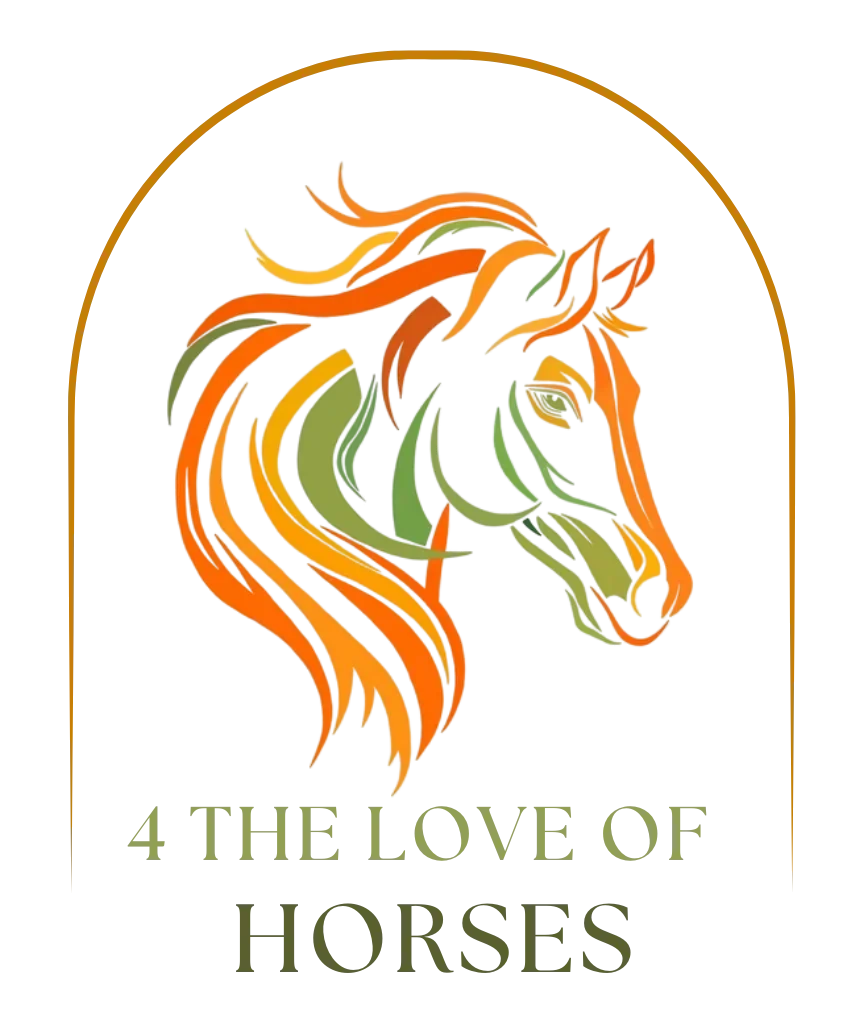

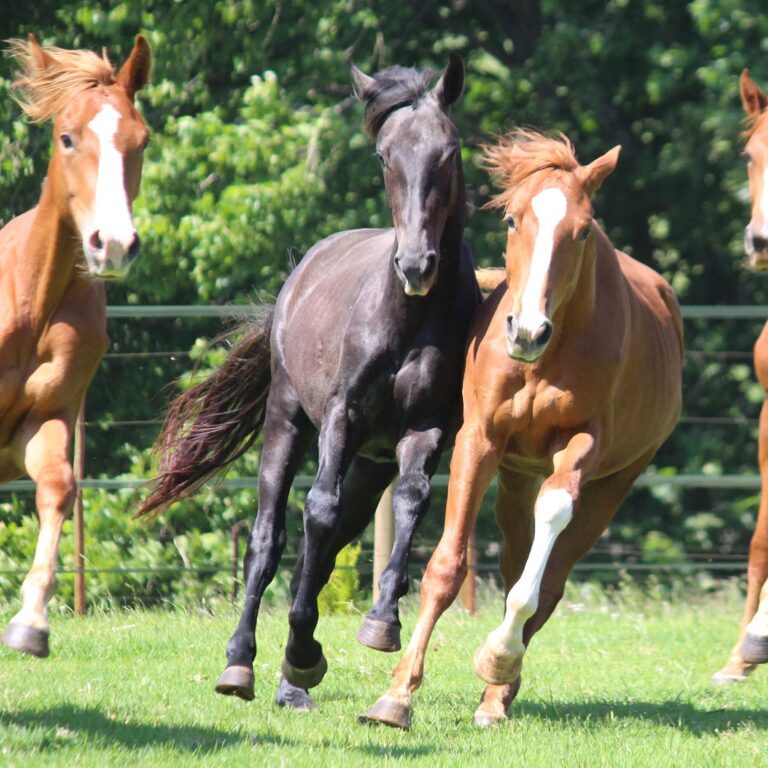
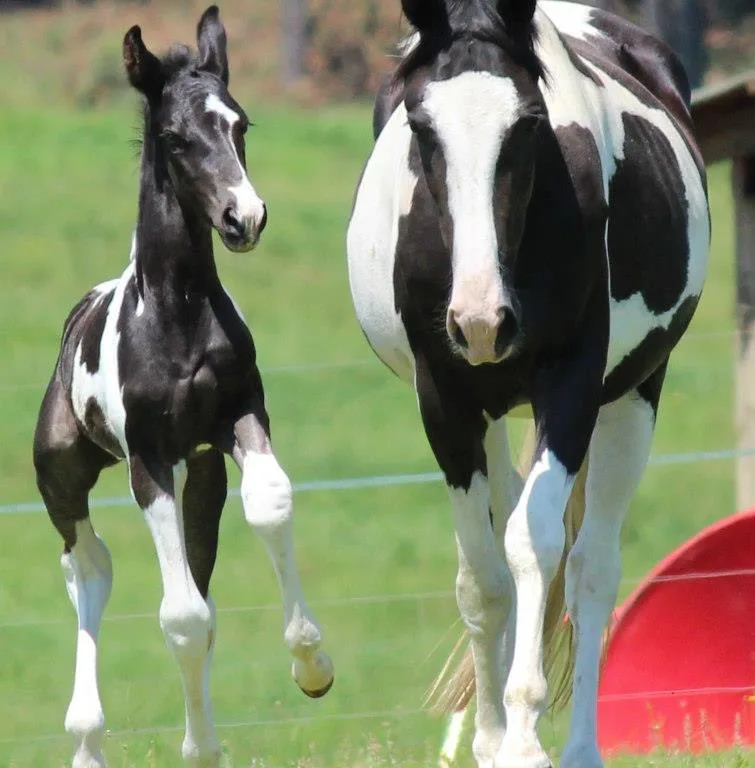
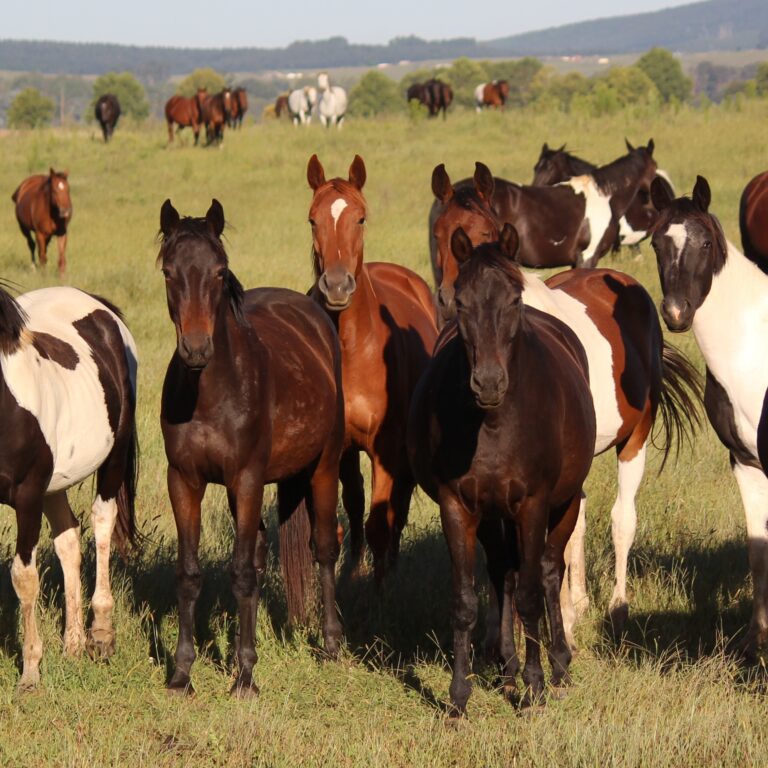

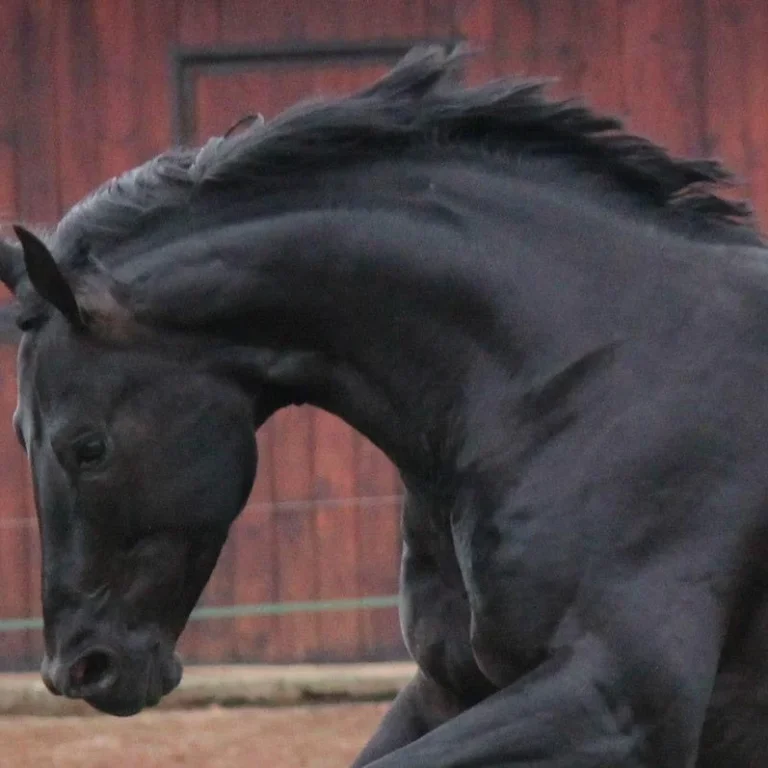
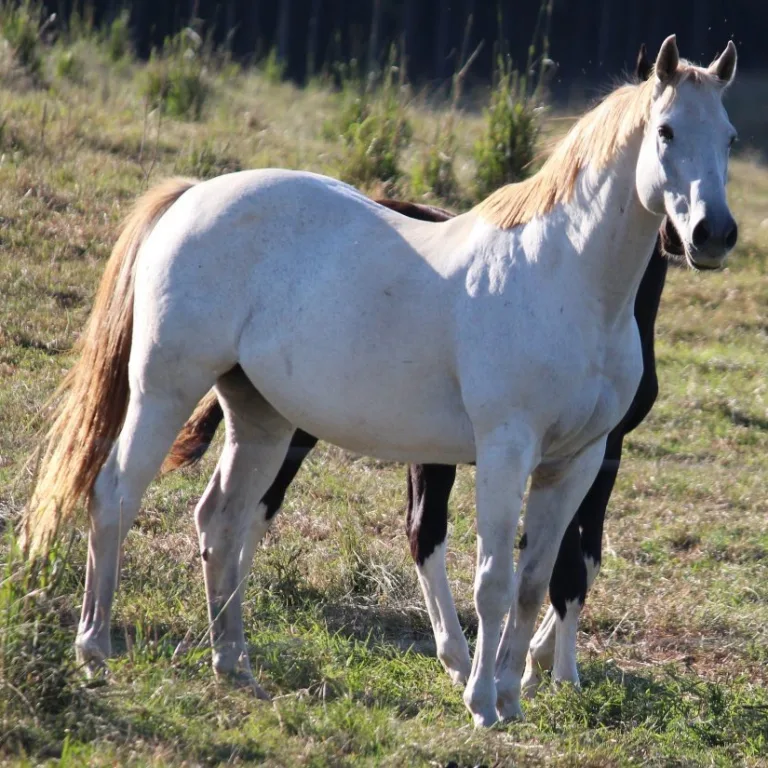
Leave a Reply